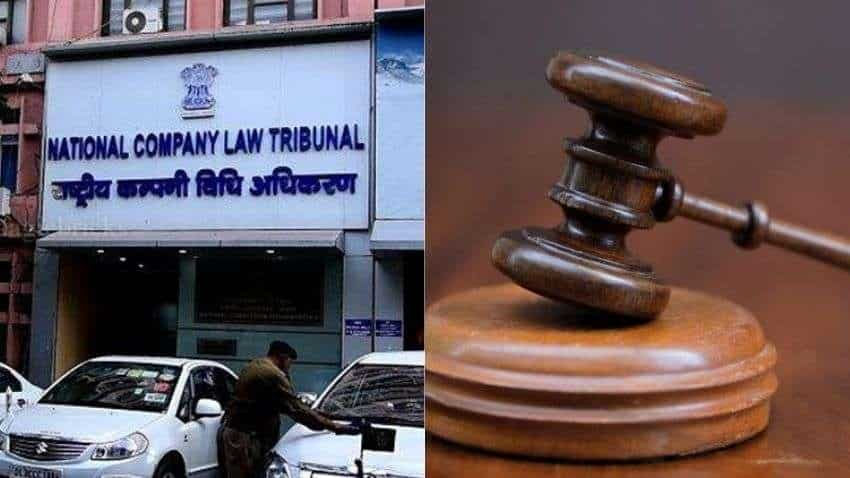Debt recovery via insolvency cases at 31 percentage; 47 percent cases liquidated: Report
Nearly half of the 3,247 insolvency cases have been resolved through liquidation, and only a paltry 457 or 14 percent of them through asset sale as per their lenders-approved resolution plans, a report said on Friday.

Nearly half of the 3,247 insolvency cases have been resolved through liquidation, and only a paltry 457 or 14 percent of them through asset sale as per their lenders-approved resolution plans, a report said on Friday.
Even the various resolution processes have witnessed the recovery of debt of just 31 percent on an average, said the data from the Insolvency & Bankruptcy Board of India.
See Zee Business Live TV Streaming Below:
The data which covers all the cases since the implementation of the Insolvency and Bankruptcy Code (IBC) five years ago till December 2021 reflects very slow pace of the process, according to an analysis by Icra Ratings.
Liquidation means lenders or financial firms face the maximum brunt of losses on their books.
Of the Rs 7.52 lakh crore claims made by the creditors on their borrowers, the lenders could realise only Rs 2.5 lakh crore, reflecting the pains of liquidation that lenders were forced to suffer, Icra Ratings said in its analysis.
While various NCLTs (National Company Law Tribunals) have admitted 4,946 bankruptcy cases till December 2021, more than 10,000 applications are still pending for admission or rejection.
According to the agency, NCLTs have so far closed 3,247 applications while 1,699 are still ongoing.
As much as 47 percent or 1,514 cases of the total 3,247 cases resolved through liquidations, only 14 percent or 457 applications were closed as per proper resolution plans approved by lenders. A larger 22 percent of the total resolutions are still pending review/appeals and 17 percent of the total admitted cases have been withdrawn so far, according to the analysis.
One of the main reasons for the relatively lower realisation, the analysis noted, is that as much as 77 percent of the cases are either under the Board for Industrial and Financial Reconstruction (BIFR) or non-operational when admitted, indicating that even after five years of implementation, the IBC is still handicapped as the government has not scrapped the BIFRs and DRTs.
Besides, more than 50 percent of the cases admitted have been submitted by operational creditors, demonstrating their role under the code.
About the delay in the resolution process, the agency said that as against the mandated 90 days to close a case after admission, 73 percent of the cases were completed well after 270 days. While 16 per cent cases took 90-270 days, only a paltry 11 per cent cases were closed within the stipulated 90-day period.
A total of 69 cases took 90-180 days for completion, 75 cases took 180-270 days, 154 applications took 270 days to one year, 278 were completed between one and two years. As much as 569 cases have taken more than two years to complete the process.
The delayed resolutions, according to the agency, were largely due to legal entanglements and the highly understaffed/overburdened NCLT benches.
Only 20 percent of the cases referred for liquidation have been completed, and almost half of the ongoing 80 per cent cases have taken more than two years to complete liquidation.
About who dragged the defaulter to the insolvency court, the report said, 51 percent of the applications were filed by operational creditors, 43 percent by financial creditors and 6 percent by corporate debtors.
Sector-wise, the companies in the manufacturing business topped the list of bankruptcy applications with 40 per cent of the total cases, followed by real estate firms (20 percent), construction and others (11 percent each), retail trade (10 percent), transport and electricity (3 percent each) and hotels (2 percent).
Get Latest Business News, Stock Market Updates and Videos; Check your tax outgo through Income Tax Calculator and save money through our Personal Finance coverage. Check Business Breaking News Live on Zee Business Twitter and Facebook. Subscribe on YouTube.
RECOMMENDED STORIES

SBI 444-day FD vs PNB 400-day FD: Here's what general and senior citizens will get in maturity on Rs 3.5 lakh and 7 lakh investments in special FDs?

Power of Compounding: How long it will take to build Rs 5 crore corpus with Rs 5,000, Rs 10,000 and Rs 15,000 monthly investments?

Small SIP, Big Impact: Rs 1,111 monthly SIP for 40 years, Rs 11,111 for 20 years or Rs 22,222 for 10 years, which do you think works best?
09:31 PM IST










 Texmaco Rail moves NCLT to restore insolvency plea against Delhi Airport Metro Express
Texmaco Rail moves NCLT to restore insolvency plea against Delhi Airport Metro Express  PSU Stock: Multibagger stock gained as company signs pact to revive petrochemical plant in Mangalore
PSU Stock: Multibagger stock gained as company signs pact to revive petrochemical plant in Mangalore Finance Minister Nirmala Sitharaman meets heads of PSBs, asks banks to undertake special drive to garner deposits
Finance Minister Nirmala Sitharaman meets heads of PSBs, asks banks to undertake special drive to garner deposits  Byju's knocks at NCLAT door against NCLT's insolvency order; seeks urgent hearing
Byju's knocks at NCLAT door against NCLT's insolvency order; seeks urgent hearing NCLT accepts BCCI insolvency plea against Byju's, ed-tech firm to challenge decision
NCLT accepts BCCI insolvency plea against Byju's, ed-tech firm to challenge decision